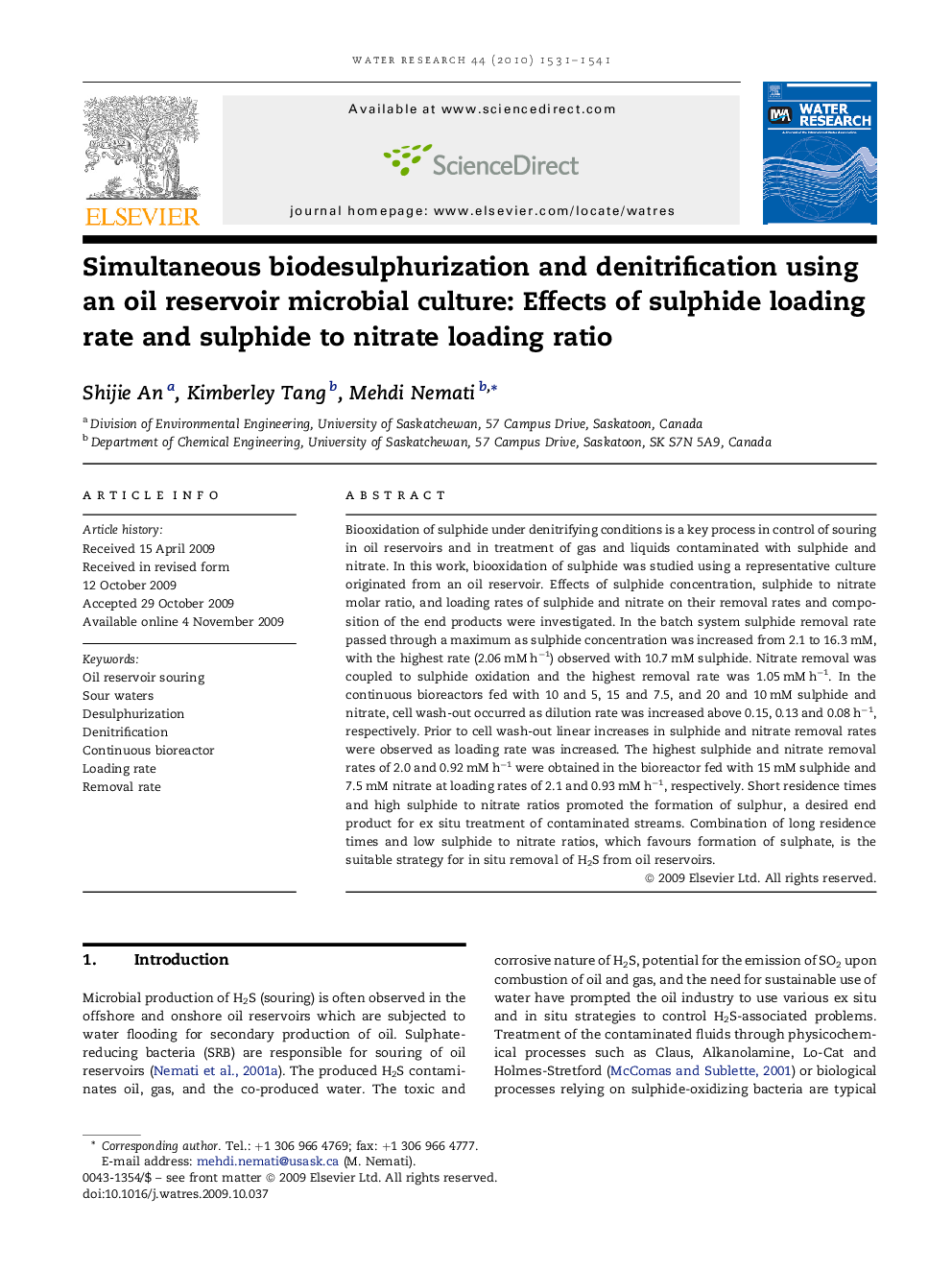| Article ID | Journal | Published Year | Pages | File Type |
|---|---|---|---|---|
| 4484290 | Water Research | 2010 | 11 Pages |
Biooxidation of sulphide under denitrifying conditions is a key process in control of souring in oil reservoirs and in treatment of gas and liquids contaminated with sulphide and nitrate. In this work, biooxidation of sulphide was studied using a representative culture originated from an oil reservoir. Effects of sulphide concentration, sulphide to nitrate molar ratio, and loading rates of sulphide and nitrate on their removal rates and composition of the end products were investigated. In the batch system sulphide removal rate passed through a maximum as sulphide concentration was increased from 2.1 to 16.3 mM, with the highest rate (2.06 mM h−1) observed with 10.7 mM sulphide. Nitrate removal was coupled to sulphide oxidation and the highest removal rate was 1.05 mM h−1. In the continuous bioreactors fed with 10 and 5, 15 and 7.5, and 20 and 10 mM sulphide and nitrate, cell wash-out occurred as dilution rate was increased above 0.15, 0.13 and 0.08 h−1, respectively. Prior to cell wash-out linear increases in sulphide and nitrate removal rates were observed as loading rate was increased. The highest sulphide and nitrate removal rates of 2.0 and 0.92 mM h−1 were obtained in the bioreactor fed with 15 mM sulphide and 7.5 mM nitrate at loading rates of 2.1 and 0.93 mM h−1, respectively. Short residence times and high sulphide to nitrate ratios promoted the formation of sulphur, a desired end product for ex situ treatment of contaminated streams. Combination of long residence times and low sulphide to nitrate ratios, which favours formation of sulphate, is the suitable strategy for in situ removal of H2S from oil reservoirs.
